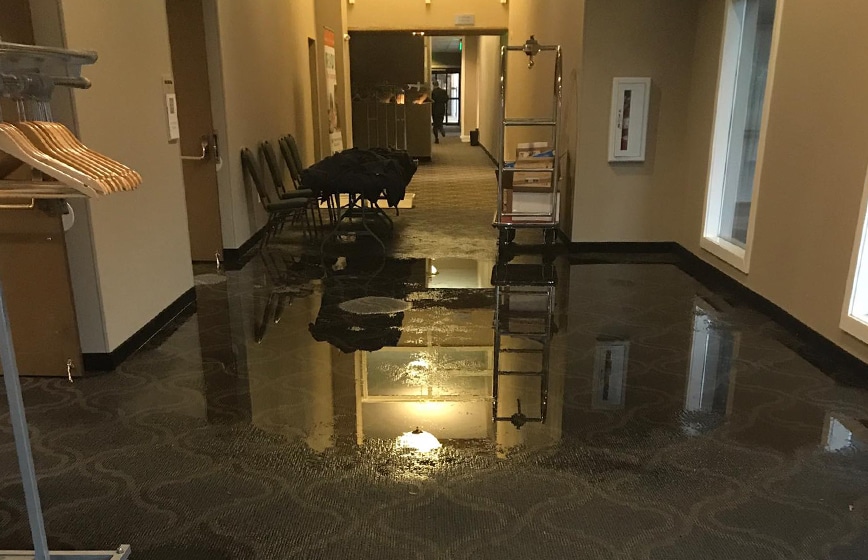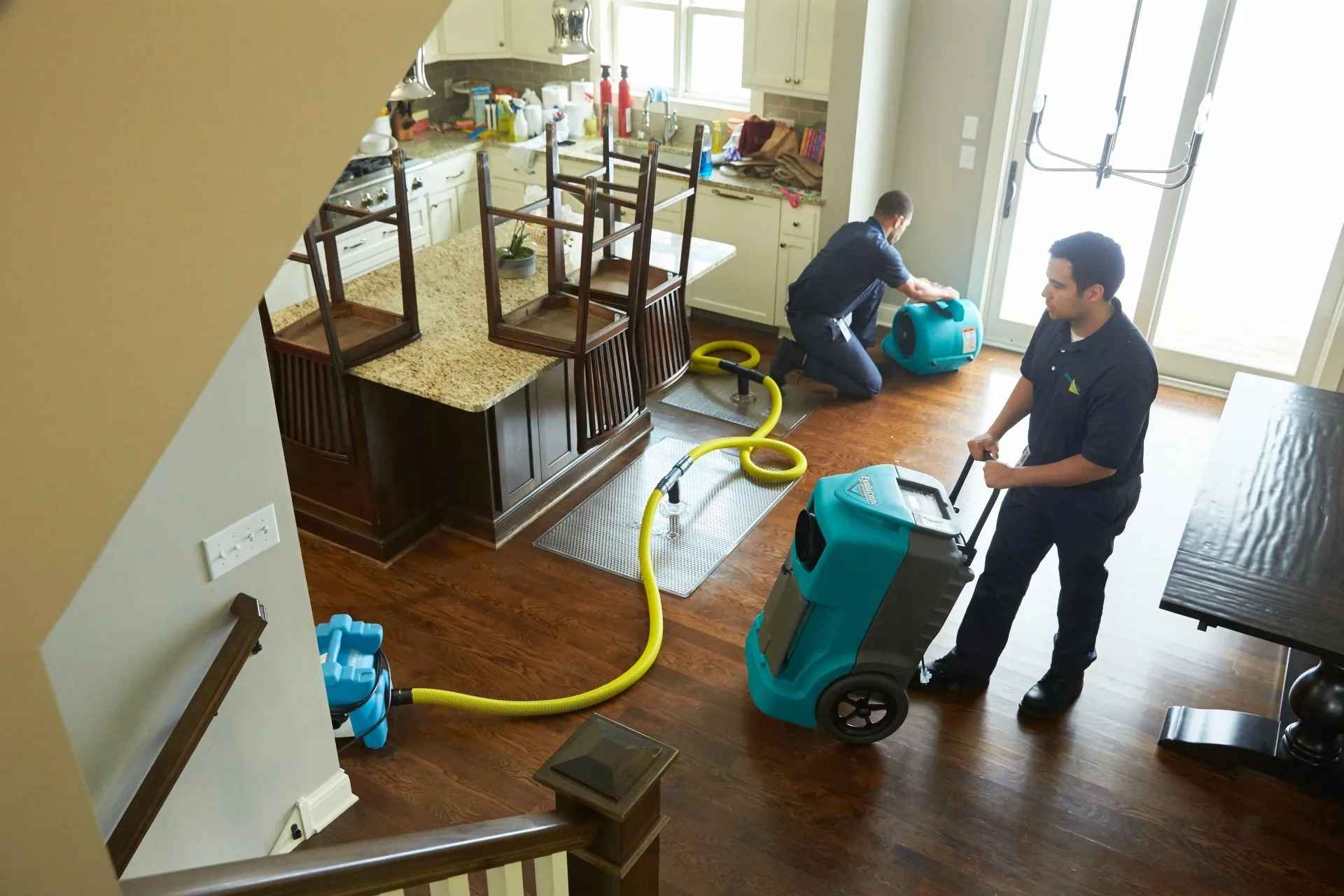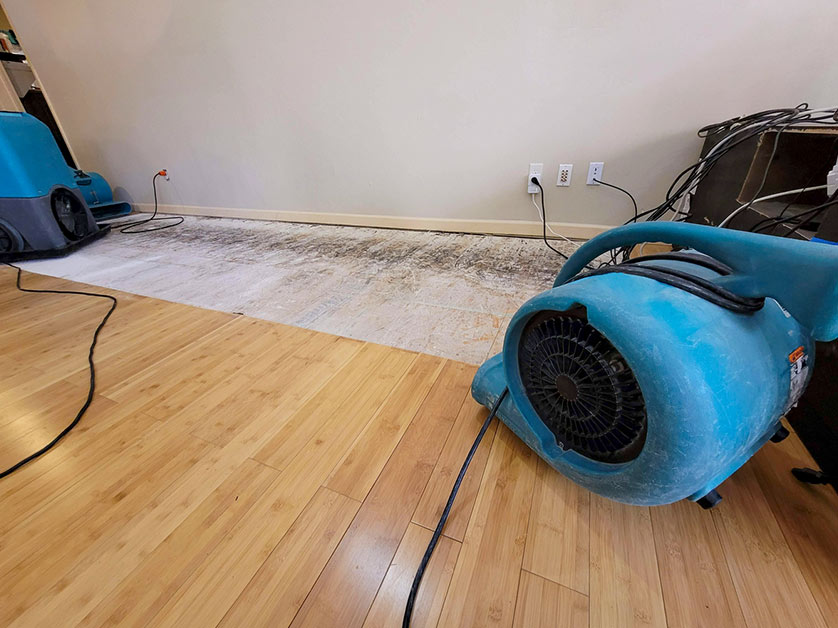Water Damage Restoration 101: Comprehending the Process and Cost
Water damage can strike all of a sudden, leaving property owners in a state of complication. Comprehending the reconstruction process is necessary for efficient recovery. From examining the damage to selecting the ideal provider, each action affects the total end result and expense. Variables such as the kind of water damage and urgency also play a significant duty. What are the certain methods used in reconstruction, and how can one plan for potential expenditures?
Sorts Of Water Damage
Water damage can occur from numerous resources, each providing unique difficulties for reconstruction. The three primary kinds of water damage are categorized based upon contamination degrees: tidy water, grey water, and black water. Tidy water originates from resources like damaged pipes or rain, positioning minimal health and wellness risks. Gray water, which includes wastewater from sinks or cleaning equipments, contains contaminants that may create pain or illness if ingested. Black water, one of the most hazardous group, comes from sewer or floodwaters, containing damaging bacteria and virus. Each type demands specific remediation methods and security steps to effectively alleviate and address the damage health threats. Recognizing these distinctions is essential for specialists and property owners associated with the water damage reconstruction process.
First Analysis and Examination
A thorough first analysis and examination are important action in the water damage restoration procedure. This phase starts with a specialist evaluating the degree of the damage, identifying the resource of the water intrusion, and establishing the type of water entailed - Flood Cleanup Services. Service technicians use customized tools to determine moisture degrees in different materials, such as walls, floors, and furnishings. Additionally, they examine architectural integrity and possible wellness threats, consisting of mold development. The searchings for from this inspection inform the restoration plan, guiding required actions and source allocation. Precise documents of the damage is vital for insurance policy claims and future referral. Generally, this preliminary analysis prepares for reliable repair, guaranteeing a comprehensive reaction to the certain scenario handy

Water Removal Methods
Adhering to the initial analysis, reliable water removal methods are used to alleviate damage and avoid further issues. These methods include making use of customized devices such as industrial-grade vacuum cleaners and completely submersible pumps. The option of method depends upon the quantity of water existing and the sort of products influenced. For standing water, completely submersible pumps are normally made use of for quick elimination, while vacuum cleaners are optimal for extracting water from rugs and upholstery. In addition, progressed approaches like water extraction mats may be employed for hard-to-reach locations. The goal is to get rid of as much water as feasible, reducing the possibility for mold and mildew development and structural damage. Motivate and reliable water removal is essential in the overall water damage remediation process.
Drying Out and Dehumidification Process
As soon as the water removal is full, the drying and dehumidification procedure becomes vital to restoring the afflicted location. This stage typically employs industrial-grade dehumidifiers and air movers to properly minimize moisture levels. The dehumidifiers draw in moist air, removing excess humidity, while air movers distribute air to accelerate dissipation. Monitoring equipment is often used to track moisture and temperature level degrees, guaranteeing excellent drying out conditions. The period of this process can differ depending upon the extent of the water damage and environmental aspects. It is important to completely dry all influenced materials, consisting of wall surfaces, floor covering, and home furnishings, to stop mold and mildew development and architectural damage. Proper implementation of this step is crucial for a successful remediation result.
Cleaning and Sterilizing Afflicted Areas

First Evaluation and Examination
Before starting any remediation initiatives, a detailed first assessment and examination of the influenced locations are important for effective cleaning and sanitizing. This process includes identifying the extent of water damage, identifying the resource of the water breach, and evaluating the products influenced. Inspectors typically search for indicators of mold and mildew development, architectural honesty problems, and damaged valuables. The assessment additionally consists of examining wetness degrees making use of customized devices to guarantee no surprise water pockets remain, as these can lead to more complications. Documenting the findings is crucial for planning the next action in the remediation procedure. An in-depth preliminary evaluation enables restoration experts to create a targeted method for efficient cleansing and sterilizing, inevitably lessening damage and health and wellness dangers.
Cleansing Techniques and Products
Reliable cleansing and disinfecting of water-damaged locations call for a range of items and methods tailored to the certain materials influenced. For permeable surface areas like drywall and carpets, removal approaches are necessary to eliminate excess wetness, complied with by deep cleaning with specialized cleaning agents. Non-porous products such as ceramic tile or metal can be cleaned making use of commercial-grade cleaners that successfully get rid of pollutants. Heavy steam cleansing is an additional reliable strategy, especially for carpets and upholstery, as it makes use of heats to get rid of germs and mold. In addition, environment-friendly products are significantly prominent for their security and effectiveness. Inevitably, picking the ideal cleansing techniques and products not just assures instant cleanliness but additionally aids in protecting against more damage and carcinogen related to water intrusion.
Sanitization and Disinfection Techniques
When dealing with water damage, proper sanitization and disinfection approaches are necessary to ensure the safety and health and wellness of the damaged atmosphere. After first cleaning, surface areas need to be treated with suitable disinfectants to remove pathogens, mold and mildew, and bacteria that prosper in wet conditions. Common methods consist of using EPA-approved chemical disinfectants, which can be applied via splashing or wiping strategies. Additionally, ultraviolet (UV) light systems can effectively sanitize locations by neutralizing microbes without harsh chemicals. The option of method often depends on the sort of materials influenced and the level of contamination. Eventually, complete sanitization not only recovers a risk-free space however also helps protect against future wellness dangers related to lingering wetness and mold development.

Repair Services and Restoration Options

Variables Affecting Restoration Expenses
The level of water damage directly impacts the reconstruction costs home owners can expect to incur. Elements such as the source of the water, the period of direct exposure, and the afflicted materials considerably affect prices. As an example, clean water damage from a damaged pipe is generally less expensive to restore compared to damage triggered by sewer. Furthermore, the degree of contamination determines the demand for specialized cleansing and disposal services, further raising expenditures. Geographical place also plays a function, as regional labor prices and schedule of restoration solutions can differ. The seriousness of the action influences prices; quicker interventions normally lead browse around this web-site to reduce total costs by avoiding further damage. Recognizing these elements is essential for homeowners when estimating restoration expenses
The three key types of water damage are categorized based on contamination degrees: clean water, gray water, and black water. A complete first evaluation and examination are vital steps in the water damage restoration procedure. For standing water, completely submersible pumps are generally utilized for quick removal, while vacuum cleaners are perfect for extracting water from rugs and upholstery. The extent of water damage straight impacts the restoration sets you back homeowners can anticipate to sustain. Clean water damage from a broken pipeline is typically less expensive to recover contrasted to damage caused by sewer.